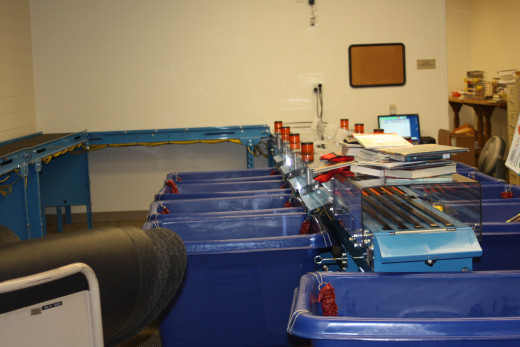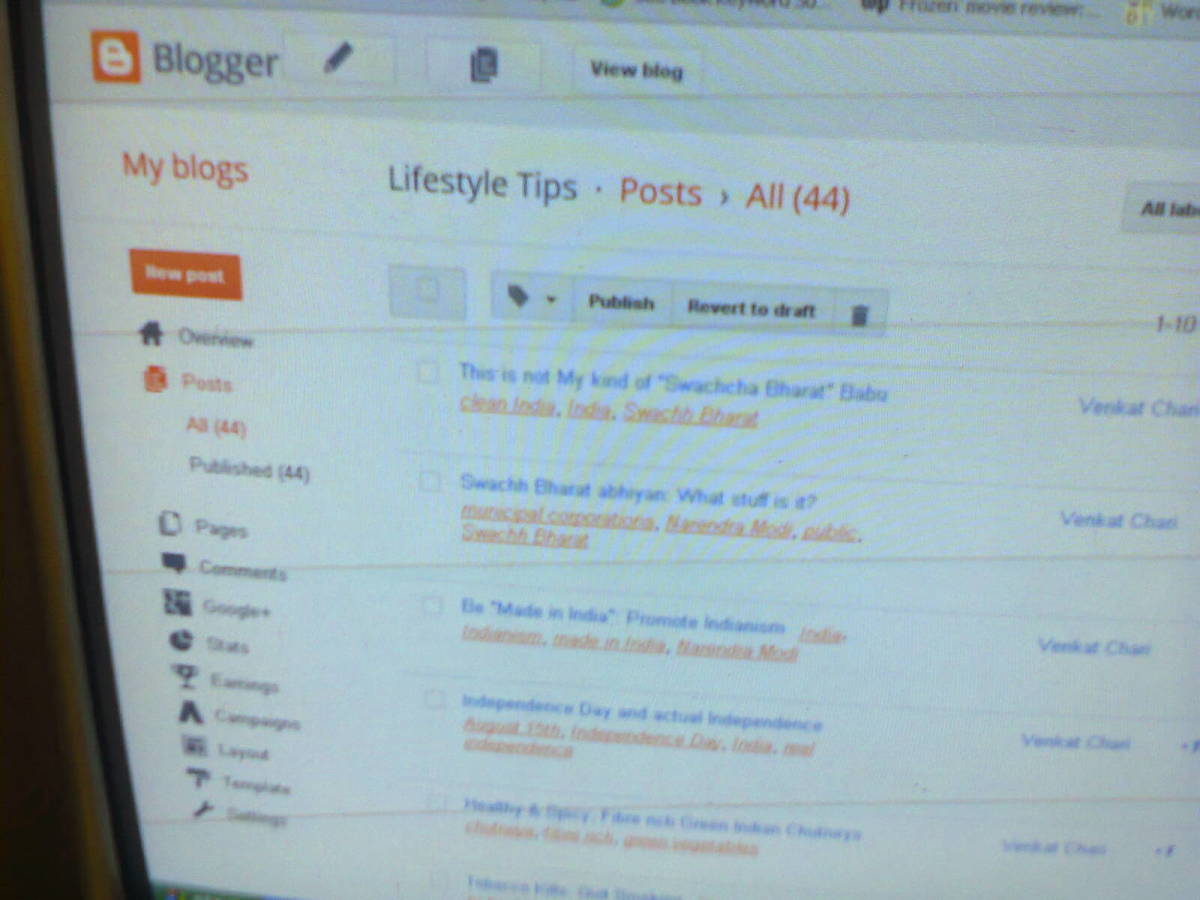Accurate Early Project Time & Cost Estimation: The Bucket Method
The Bucket Method: A Quick Overview
When a project includes more than 40 similar tasks, we can organize those tasks into buckets holding pieces of work of similar size and difficulty. Then we can make nine estimates, do a little multiplication, and get a good estimate of 40, or 200, or more parts of the work to be done.
Sorting Into Buckets

What is the Bucket Method?
It is hard to make an accurate estimate of project time and cost early, before we have a detailed plan. We need to get a handle on the total amount of work without the details of exactly what we are going to do. We'll do that by putting our work into buckets of different sizes.
This article gives you detailed instructions for the Bucket Method for early project time and cost estimation. For background, you may want to read:
Our Case Study: Web Pages and a Catalog
Let's say that we've been asked to build a medium-sized web site with 40 different web pages and a catalog of 200 images. Each of the pages will have both graphics and text. Each catalog item will need one or more photos and a line to a paragraph of text. For our example, we will create a time and cost estimate for the web pages. We will use the catalog as an example to work through estimation issues, and leave the exercise of completing the estimate to the reader.
These two items are two of five items estimated in Project Management Time & Cost Estimation Techniques: An Overview, items #3 and #4, the Web Pages and the Catalog Items.
Table #1: Number of Web Pages by Size and Difficulty
40 Web Pages
| Small
| Medium
| Large
|
|---|---|---|---|
Easy
| 7
| 2
| 1
|
Moderate
| 4
| 8
| 4
|
Difficult
| 5
| 5
| 4
|
Each pages is evaluated and sorted into one of nine "buckets." The total number of pages in each bucket is put in a cell.
Table #2: Hours of Work by Size and Difficulty
Hours per Web Page
| Small
| Medium
| Large
|
|---|---|---|---|
Easy
| 0.25
| 0.5
| 0.75
|
Moderate
| 0.75
| 1.25
| 2
|
Difficult
| 2
| 3.5
| 6
|
The length of time (effort) needed to do one item in each of the nine cells is estimated by teh worker, based on her experience of creating similar web pages in the past.
Table 3: Cost of One Item of Each Size and Difficulty
Dollars per Web Page
| Small
| Medium
| Large
|
|---|---|---|---|
Easy
| $7.50
| $15.00
| $22.50
|
Moderate
| $22.50
| $37.50
| $60.00
|
Difficult
| $60.00
| $105.00
| $180.00
|
This table is created by multiplying the effort figures in each cell of Table #2 by $30/hour to create a cost for each item.
Table #4: Web Page Effort (Time) by Size and Difficulty
Total Time to Create 40 Web Pages
| Small
| Medium
| Large
|
|---|---|---|---|
Easy
| 1.75
| 1.00
| 0.75
|
Moderate
| 3.00
| 10.00
| 8.00
|
Difficult
| 10.00
| 17.50
| 24.00
|
Total Time
| 76 hours
| all nine cells
|
This table is created by multiplying each cell in Table #1 by the corresponding cell in Table #2. It shows the total hours of work needed to complete the work in each bucket, and these are added up to create a total for all 40 pages.
Table #5: 40 Web Pages Cost Estimate Total
40 Web Pages, Total Cost
| Small
| Medium
| Large
|
|---|---|---|---|
Easy
| $52.50
| $30.00
| $22.50
|
Moderate
| $90.00
| $300.00
| $240.00
|
Difficult
| $300
| $525.00
| $720.00
|
Total Cost
| $2,280.00
| all nine cells
|
This table is created by multiplying each cell in Table #4 times the web designer's hourly rate, which is $30/hour.
Estimating the Cost of 40 Web Pages
To estimate the cost of creating 40 web pages, we ask two questions:
- How many of these pages will be short, medium, or long?
- How many of these pages will be easy, moderate, or difficult?
Rating each table on these two scales allows us to create nine "buckets" in a 3-by-3 matrix, from short and easy to long and difficult. This matrix is shown in Table #1.
Our web designer gets paid at a rate of $30/hour.
Next, we ask her to make nine estimates: How long will it take to create pages of each of the 9 bucket sizes we're using. She did this, and the results are shown as the nine numbers that fill the cells of Table #1. Ideally, she defines the bucket sizes and evaluates the pages herself. We simply guide her in estimating her own work. When team members estimate their own work, we get accurate estimates. We also get lower costs, because, by the time team members are done making the estimate, they are clear about the work to be done and excited to do it. They work more efficiently in production; when they were estimating they solved problems and remove roadblocks by thinking through the work. Estimation time is also planning time, and it reduces work time.
Table #2 shows the hours of work for one web page of each size and difficulty, based on the worker's own estimated effort, based on her experience of creating similar pages in the past. Table #3 shows the cost for one item of that size. Table #3 is created by multiplying each cell in Table #2 by $30/hour.
Table #4 shows the total time estimate for creating 40 web pages. It is created by multiplying the figure from each cell in Table #1 with the figure from the corresponding figure in Table #2. For each bucket, we are multiplying the number of items times the number of hours per item, and getting the number of hours of work needed to do all the items in that bucket. Then we add up all nine cells for our total time estimate at the bottom.
Table #5 is our cost estimate for 40 web pages. It has the same layout as Table #4. There are two ways to create it. We can multiply each cell in Table #1 (number of items per bucket) times the matching cell in Table #3 (dollar cost of producing one item) to get the cost of producing all the items. Or, we can take the total time figures from Table #4 and multiply by our rate, $30 per hour. Either way we get the same result. And we total up the total cost of all nine buckets at the bottom.
All this sums up very neatly into our overall estimate. We can create the 40 web pages in 76 hours for $2,280.
Empowering Our Teams With Estimation
I was on a job once, helping a fast-growing company rescue a $10 million project crucial to their success. As I taught the team members to plan, picture, and estimate their own work, the project moved ahead rapidly. It went from seeming impossible to being exciting work well worth doing. And, of course, when your team creates their own estimates, that's less work for you as the project manager, as well!
Estimating the Time to Create 200 Catalog Entries
The same bucket method can be used on the 200 catalog entry items. A small, easy item might be one where a clear image of the right size for the web already exists and a description of under 150 characters is easy to write. A large, complicated item might have 3 sizes and 4 colors, photos that need to be shot, and a catalog listing over 500 characters. Or there may be other factors to consider. Here are a number of relevant factors, as examples:
- Ease of starting point. If a print catalog already exists, then either the photographs or the text might be copied from there.
- Ease of conversion. If the print catalog is available in an editable electronic version, that will save time, compared to re-typing all the entries. The same is true if original, high-resolution photos exist.
- Actual number of images per item. One picture of a stapler is probably enough. A high-end file cabinet, though, should probably be shown stand-alone and also fitting into an executive suite.
- Items and their variations. A single T-shirt might come in four sizes, but you only need to create a picture of one size. But you might need to take one picture with a stack of 6 T-shirts of different colors, or of 6 T-shirts, to show the colors well.
- Ease of photography. It is a lot easier to take a picture of a stapler than a picture of a file cabinet!
- Modeling. Time and cost go way up if we need to put our clothing on models.
- Special Considerations. Do we want to include customer testimonials to increase sales? Do we want to create a single image of an office to sell five separate items: The file cabinet, the stapler, the desk, the pencil holder, and the magazine rack
- Delivery, testing, and final changes. What is the exact job we are estimating: The creation of catalog entries? A draft web site ready for testing? Or a tested, operational catalog and a working shopping cart?
All of these considerations, which are really detailed planning, come to mind as we build the time and cost estimate for each item. And this planning may raise other issues that are not about each item, but about the image, style, language, and presentation of the whole web catalog. The more of this that is decided now, the less time-consuming and expensive the whole project will be. In technical language, we are refining the Project Scope Definition through Progressive Iteration when we work with the team to create our early estimates.
The creation of the buckets for 9 categories with 200 items, and the time estimates and cost estimates are left as an exercise to the reader. Simply create empty tables like Tables #1 through #5 and build your own example for the catalog - or estimate your own project!
Setting Priorities During Estimation
A number of the issues discussed in the main articles raise questions that are best answered in consultation with the customer. And most of them focus on a business decision the customer must make: What is the driver of this project?
On any project, there are three possible drivers:
- Time: deliver the project as soon as possible, as long as it is complete and within budget.
- Cost: Deliver the project at the lowest possible cost, as long as it is complete and arrives on time.
- Quality: Deliver the project so that it gives the highest value to the customer, as long as it is on time and within budget.
In our example, getting models and photographing the clothing we want to sell with live models and the office supplies in realistic-looking sets creates the highest quality website that will drive the most sales. But if it is urgent to get the site working in time for the Spring opening or if money is tight, it might be better to get a more basic site up sooner, or at lower costs.
Including Management Time and Other Work
Even when we use the Bucket Method, not all of our work will fit into the buckets. There will be setup time. There will be management meetings. There will be testing, fixing, and delivery. These must be included in the estimate and not ignored, and there are several ways to do this:
- We can simply make a list of these activities, and come up with a low, middle, and high estimate for each one, then use the middle figure or a PERT average.
- For small and fairly standard items, we can copy an estimate from the actual time the same activities took on a similar past project. But we should think this through: For example, if this is the same client we used before, then we should ask them if they want the same meeting structure. If it's a new client, we should explain what we've done in the past, and see if they want something the same, more, less, or entirely different.
- We should identify risks. For example, if the client wants a committee to approve the site before it goes live, that will probably slow things down and bring in a lot of changes near the end. Let's plan for that and reduce the pressure.
- We should allow adequate time for testing and fixing before we go live with the site.
We can adjust our cost calculations in a similar way. We can calculate the cost of our time by multiplying hours of effort times our rate. But we should look for other expenses. Do the catalog items need to be shipped from a warehouse to the photo studio? Where do they go when we are done using them? Do we need to pay models or to rent special studio space or lighting equipment?
Taking all of this into account, we generate a final time and cost estimate for all the work to be done, starting from where we are now and ending with customer delight.
The estimate we create using Bucket Method is our central, or likely estimate. However, the accuracy of the bucket method means that our low and high (optimistic and pessimistic) estimates will vary less from the likely estimate than would be the case if we didn't use the Bucket Method.
Completing the Early Time and Cost Estimate
When we think the estimate is done, it is time to check all of our facts and numbers:
- Does our starting point match the real situation now?
- Does our ending point match the scope of the project?
- Have we thought through our approach, and included all of what we will do and how we will do it?
- Have we checked our figures and calculations?
When we've reviewed all of that and made any necessary changes, our time and cost estimate are ready to be included into our project plan.








